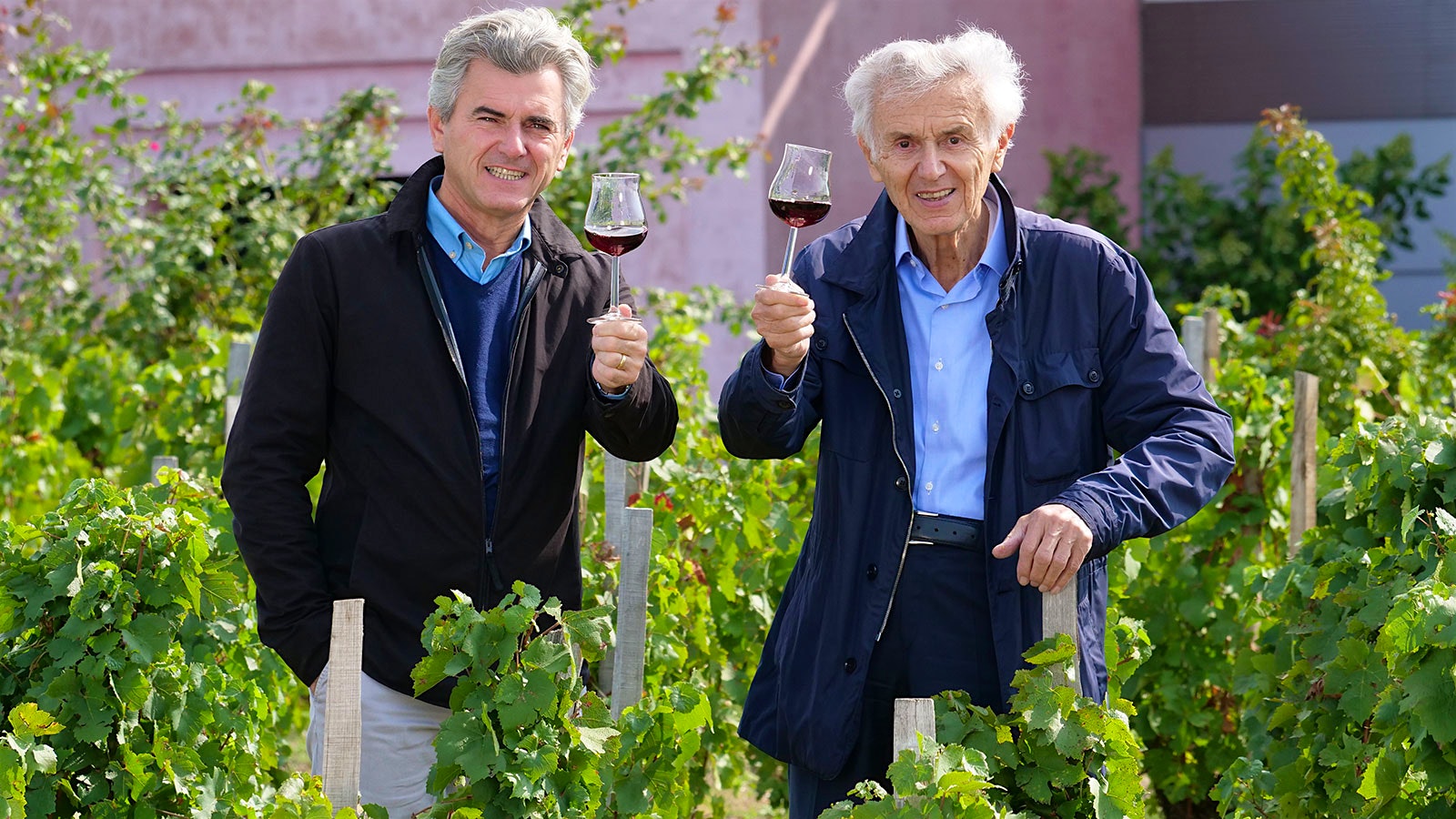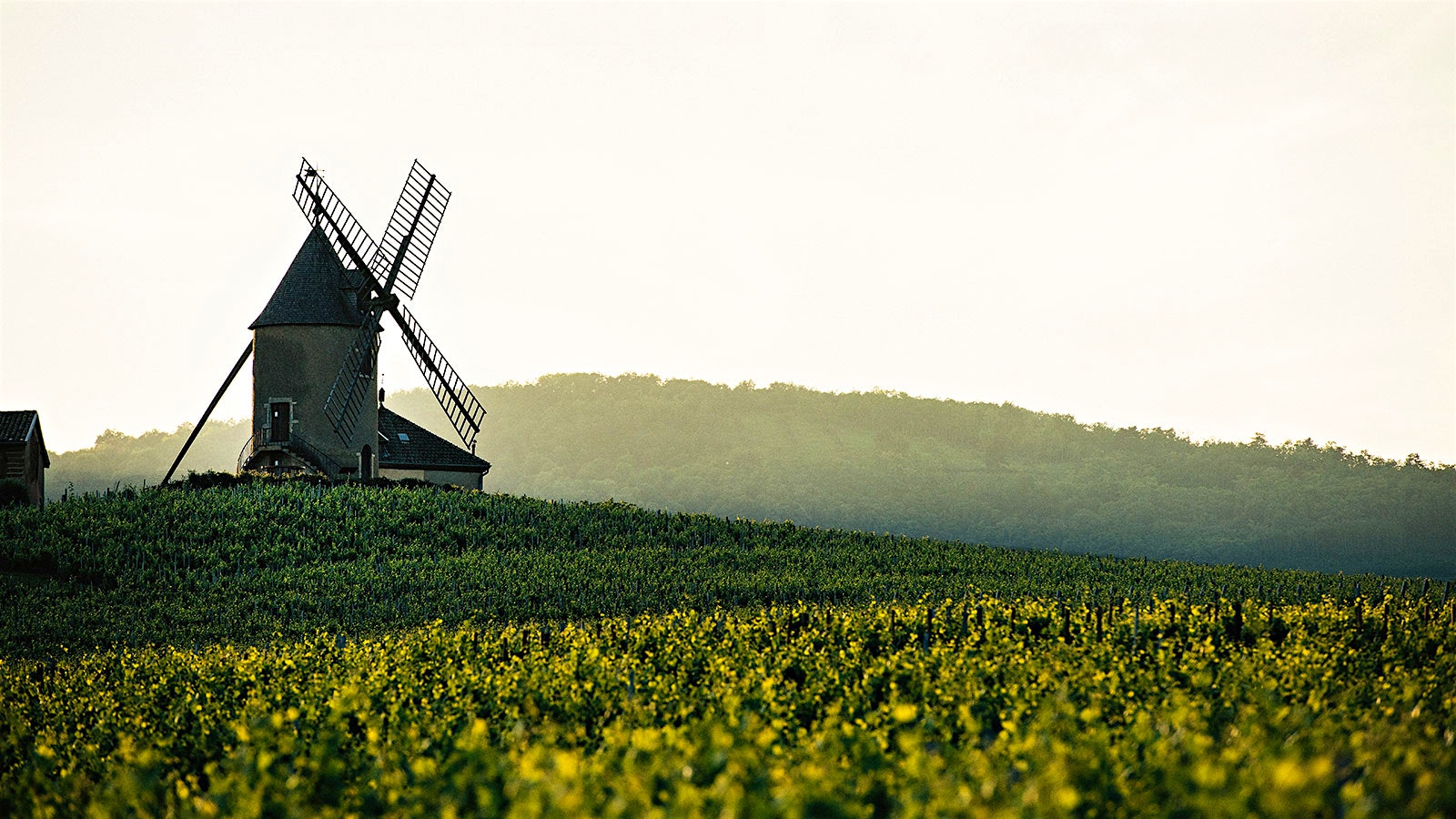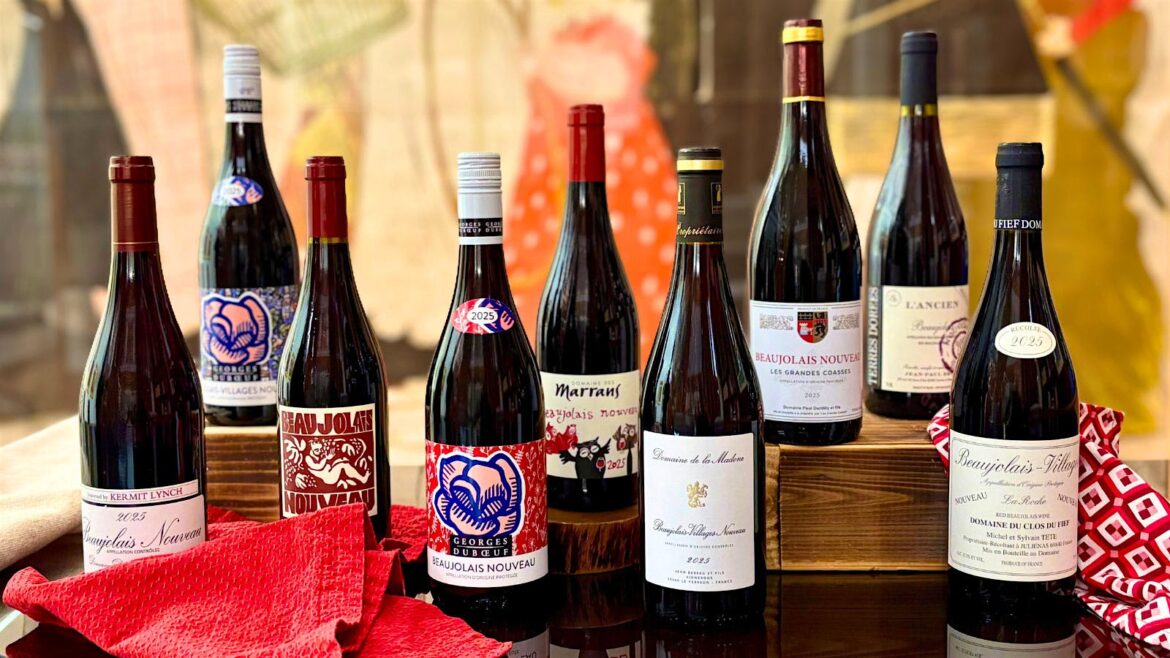Beaujolais Nouveau is the wine world’s most famous sprint—the wines are made, bottled and shipped within weeks of harvest. But what began as a local celebration marking the end of the season has grown into an international phenomenon. In 2025, a difficult but high quality vintage, longtime Nouveau lovers and novices alike have plenty of reason to cheer, with Thanksgiving-worthy bottles from Domaine de la Madone, Domaine du Clos du Fief, Georges Duboeuf and more.
The late Georges Duboeuf, who helped propel Nouveau to global fame in the 1980s, was largely responsible for the wine’s transformation into an annual vinous tradition. His efforts captured the imagination of American drinkers and sparked a craze that soon spread as far as Japan, which is now the second most important market after the United States.
Though as quickly as Nouveau lands, critics are ready to dismiss it as an unserious wine unworthy of serious attention. They’re not wrong that Nouveau is simple and playful—it’s juicy, sometimes veering into bubblegummy or banana-taffy territory, and it entirely lacks the structure of wines meant for aging. These bottles are made to be enjoyed immediately and are best within a few months of release. (I like to drink them before the New Year.)
Yet there is a humble pleasure in tasting them. Nouveau offers a rare chance to experience a finished wine at its freshest, which can give subtle clues about the harvest that has only just concluded. While the style may not possess the polish or depth of Beaujolais’ increasingly acclaimed cru wines, it allows drinkers to take part in a time-honored harvest tradition, to celebrate the work that goes into winemaking and to build anticipation for the greater wines to come.

Franck Duboeuf—pictured with his late father, Georges, who helped popularize Nouveau—still produces leading examples of the style. (Courtesy of Georges Duboeuf)
What Is Beaujolais Nouveau?
All red wines made in Beaujolais—including Nouveau—are produced from the region’s sole permitted red grape, Gamay. Fruit for Beaujolais Nouveau generally comes from the area’s more modest vineyard sites rather than its distinguished crus. That means grapes are sourced from both the broader Beaujolais AOC and the 38 villages within the Beaujolais-Villages AOC. Franck Duboeuf, whose négociant house produces between 20 and 25 percent of all Nouveau, sources fruit from across the region. He encourages growers to remain patient and harvest “healthy grapes with phenolic maturity and a good balance between acidity and sugar.”
Nouveau’s exuberant style reflects Gamay’s naturally high-toned character, but these traits are amplified by the techniques that have become closely associated with the region: carbonic or semi-carbonic maceration, both carried out in temperature-controlled stainless-steel tanks to regulate fermentation and preserve freshness.
In carbonic maceration, whole, uncrushed bunches are placed in sealed, CO₂-filled tanks. In this oxygen-free environment, the berries undergo intracellular fermentation and produce a small amount of alcohol before they eventually burst. The juice is drained, the grapes are pressed and yeast completes fermentation off the skins. Gentle skin contact means minimal tannin extraction.
Semi-carbonic maceration—a hybrid method—also uses whole clusters but does not begin with a CO₂-saturated vessel. Grapes at the bottom of the tank are crushed under the weight of those above, spontaneous fermentation begins and the resulting CO₂ creates the anaerobic conditions needed for intracellular fermentation in the intact berries above.
These methods are efficient ways to produce accessible wine quickly—fermentation lasts only three to five days—and at high volume. But the cynicism surrounding Nouveau’s perceived commercialization isn’t entirely warranted: Many of the 2025 Nouveau bottlings I tasted this year were made in small quantities, reflecting a genuine desire among producers to continue the tradition with a focus on quality.
2025: A Beaujolais Vintage Forged by Extremes
The 2025 growing season in Beaujolais was one of extremes. For Château du Moulin-à-Vent owner Edouard Parinet, it was “the most technically demanding in two decades.” A rainy, mildew-prone spring gave way to a summer punctuated by violent hailstorms that especially affected the northern Juliénas and St.-Amour crus.
Philippe Pascal of Mont Bessay, who has invested significantly in Juliénas, noted the meager yields left in the hail’s wake: “100 percent of vines were impacted and 90 percent of flowers were hit or destroyed.” Waterlogged soils rendered some vineyards inaccessible, forcing manual work and nearly doubling the number of necessary treatments. After a flowering washed out by heavy rain, the summer swung dramatically between weeks of drought and episodes of intense rainfall.

Philippe Pascal (center), pictured with estate manager Benjamin Rousset (left) and winemaker and co-owner Guillaume Marko (right), is pursuing quality cru Beaujolais at Mont Bessay. (Courtesy of Mont Bessay)
Harvest was exceptionally early and compressed. Most domaines began picking at the end of August and finished in less than a week as they raced to beat September rains. Yields were the lowest in two decades.
Despite the challenges, fruit quality was excellent across the region. Small berries with thick skins delivered high concentration and fresh acidity, and stems achieved adequate ripeness. While quality depended on how selectively growers picked, the resulting wines show vivid red fruit, spice, floral lift and the depth typical of low-yield years. With their combination of ripeness, tension and density, 2025 is widely expected to be a long-aging vintage across the crus. Duboeuf appreciates the vintage’s equilibrium, particularly its combination of vibrant acidity and balanced sugar. He calls 2025 “a very drinkable vintage” that produced Nouveaus in a “floral, easy-to-drink style—true Beaujolais Nouveau.”
Top 2025 Beaujolais Nouveaus
The Nouveaus I tasted for this report showed the category’s typical variability in style and quality. Some were overtaken by the telltale markers of carbonic maceration, especially banana candy notes that overwhelmed genuine fruit character. As expected, the wines made from Beaujolais-Villages vineyards were the strongest.
Standouts included Domaine de la Madone’s Beaujolais-Village Nouveau, which offered impressive concentration and a silky palate, and Domaine du Clos du Fief’s Beaujolais-Village Nouveau La Roche, which delivered typical smoky minerality and graphite flourishes that lent the wine high tones and a touch of chalky texture. Georges Duboeuf’s workhorse, the widely available Beaujolais Nouveau bottling, was the highlight of its category, showing violet and blackcurrant jelly aromas and flavors with the vibrant, lifted character that Nouveau fans are looking for.
Thanksgiving Food Pairings for Beaujolais Nouveau
The virtue of these wines is their freshness. They’re naturally seasonal—not only in style and tradition, but also in the way they reach the United States just before Thanksgiving. This timing works out well, as Nouveau is best enjoyed as an affordable, easygoing aperitif or as a partner for simple comfort foods. Nouveau is the vinous equivalent of canned cranberry sauce: It shines brightest during the holiday season, and it certainly doesn’t improve with age.
And yet these bottles have their charms. Their novelty still resonates with houseguests in the know, and they pair notably well with saucisson. As a bonus, their tanginess works with gherkins, and they’re delicious alongside moderately flavored cheeses too.

Château du Moulin-à-Vent produces quality cru Beaujolais bottlings well worth seeking out. (Franck Juery)
The Best Is Yet to Come
The spectacle of Nouveau has drawn attention to Beaujolais, a small region that—depending on whom you ask—may or may not be considered part of Burgundy, that mythic center of French wine. Helped along by attentive sommeliers, consumers have grown increasingly curious about Beaujolais’ finest offerings: its ten crus, each shaped by a distinctive terroir, which are permitted to label their wines with their village name. Unlike Nouveau, these wines are harder for serious drinkers to dismiss: The best deliver dense fruit with mineral and herbal accents reminiscent of outstanding Burgundies, and the most powerful examples—from Moulin-à-Vent, Morgon and Juliénas—can develop attractively for years in the cellar, often at a fraction of the price of their more famous neighbors to the north.
The good news for those who have discovered these top bottlings is that the region is undergoing exciting developments. Fleurie, Brouilly and Moulin-à-Vent have all submitted applications to the French National Institute of Origin and Quality (INAO) to elevate certain lieux-dits to premier cru status. (Don’t hold your breath—government bureaucracy may keep us waiting for years.) Still, once these lieux-dits are formally approved, they will set an important precedent, and the accompanying regulations should further enhance quality across these diverse terroirs.
In the meantime, whether Nouveau is already a Thanksgiving tradition for you or this is your first year joining in, consider adding some cru wines to your holiday menu as well. Let the Nouveau serve as a palate-brightening opener, while the more structured Gamays from the crus bring an elevated sense of occasion and pair beautifully with the wide range of dishes on a Thanksgiving table. The top-scoring lieu-dit bottlings from Château du Moulin-à-Vent, Mont Bessay in Juliénas and Domaines Dominique Piron in Morgon are worth seeking out.
Le Beaujolais Nouveau est arrivé!
Wine Spectator website members: Looking for more great wines from Beaujolais? Get our scores and tasting notes for recently rated Beaujolais.


Dining and Cooking